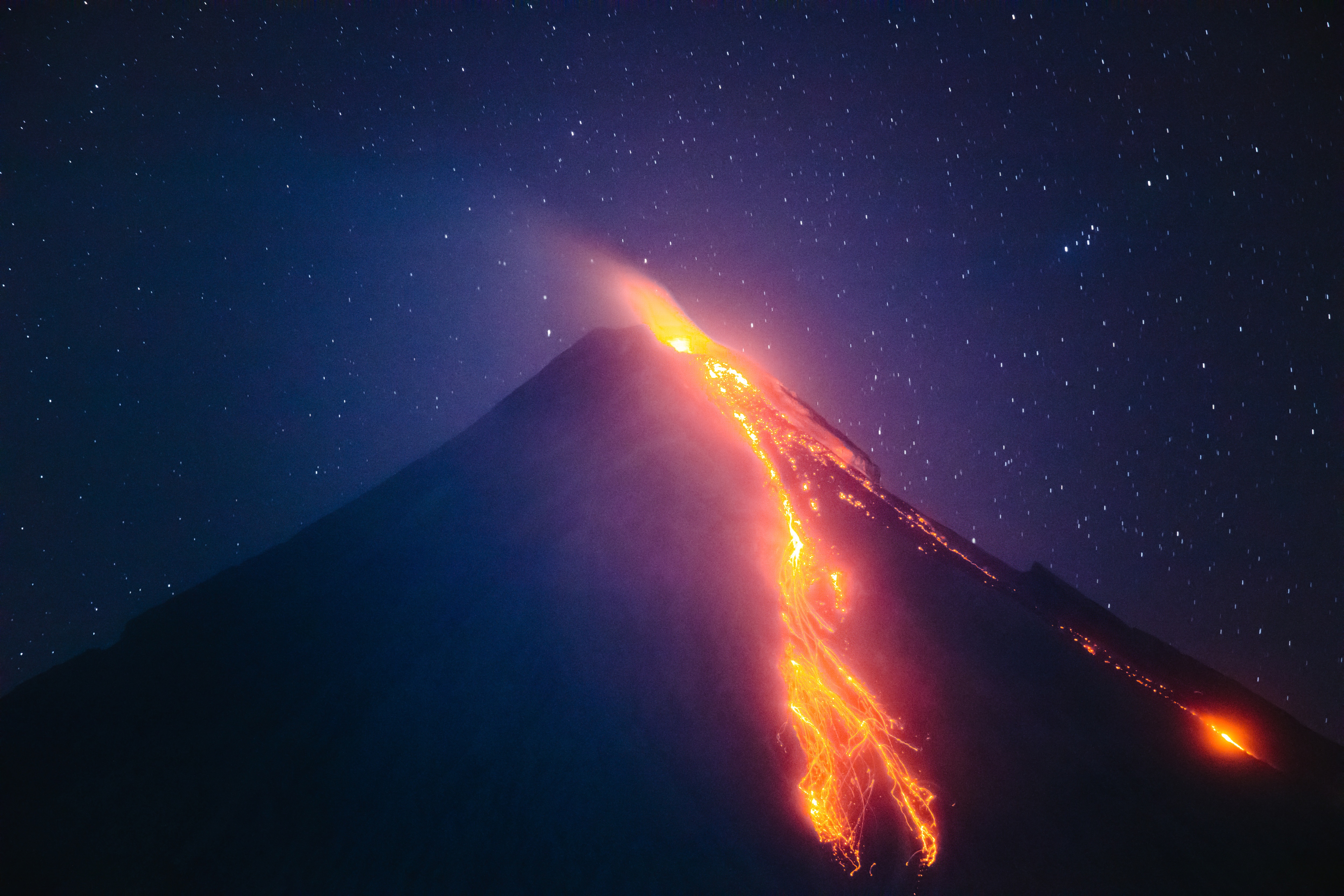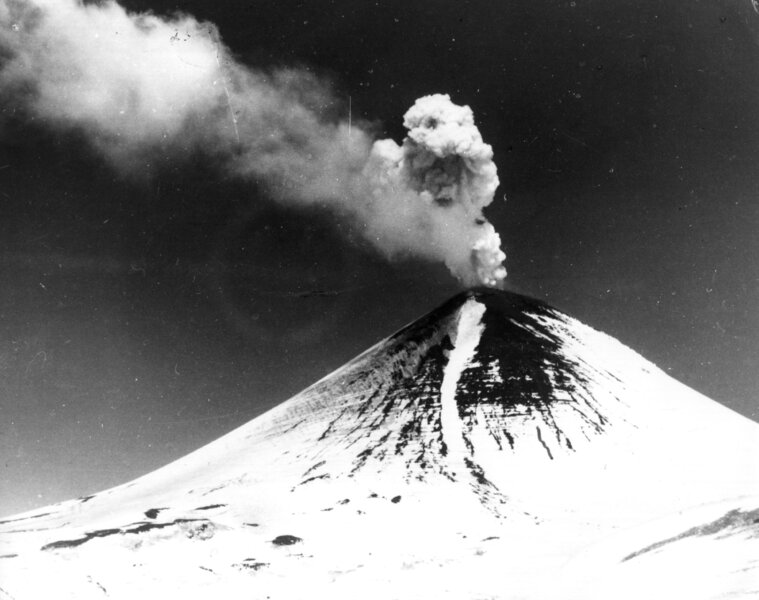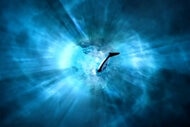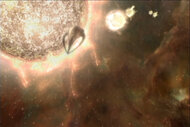Create a free profile to get unlimited access to exclusive videos, sweepstakes, and more!
Space volcanoes erupting in black holes? Sort of…
Gaseous bubbles from black holes can burst, leaving behind filaments that seem to come from a smoking volcano.

Black holes are kind of like cosmic volcanoes, especially when they spew out super hot, highly energetic jets of particles into space like volcanoes on Earth erupt in bubbling magma.
That isn’t the only volcanic resemblance. Sometimes bubbles form in black hole ejecta just like they do in actual magma, except the gaseous bubbles belched out by a supermassive black hole are much weirder. Particles stream out at the speed of light and generate radio waves. Particles and magnetic fields in these streams can expand and move space around them — or they can burst and leave behind gas filaments that appear to emerge from a smoking volcano.
Astronomers from the University of Bologna and the Italian National Astrophysics Institute (INAF) have now observed the evolution of gas that erupts from a black hole for the first time ever. Some of the remnants of these bubbles, whose particles are still zooming around at the speed of light, can extend up to a million light years and take over hundreds of millions of years. The team recently published a study in Nature Astronomy.
“These bubbles have been identified in a wide range of systems. However, due to the short synchrotron lifetime of electrons, the most advanced phases of their evolution have remained observationally unconstrained,” they said in the study.
Observations of the radio galaxy Nest200047 revealed particle streams from the supermassive black hole in its active galactic nucleus (AGN). It was only possible to make out both the bubbles and their remnants, which appeared as trails of smoke, with the largest low-frequency radio telescope that exists, LOFAR. It could pick up on the oldest electrons ever detected and see over a hundred million light years away. Its vision helped the team of astronomers figure out how the black hole in the AGN of Nest200047 and its bubbles changed over the eons.
The bubbles don’t explode right away. As they are accelerated by the energy of the black hole, they morph into enormous mushroom clouds and other shapes much like the Shoggoths that spanned from H.P. Lovecraft’s imagination (blobs of alien protoplasm that can take any form they want). If you ever looked closely at the onslaught of volcanic smoke during an eruption, you might have noticed the “mushroom” is actually made of many rings and filaments. These are the same types of structures that were observed in the Nest200047 black hole.
What made this supermassive black hole especially intriguing was that it was surrounded by bubble pairs that varied in age, which showed different phases of evolution. Supermassive black holes release immense amounts of energy because they consume so much of it. While this energy doesn’t always take the form of bubbles, it does impact star formation. Some black holes devour so much that star formation will be nearly extinguished for a while, but if they suddenly release jets of excited particles into the interstellar medium, stars may form again.
As observed, the bubbles still have some evolving to do, or at least they did. LOFAR was seeing them as they were 200 million years ago, so we have no way of knowing what exactly has happened since then. What the astronomers could see when looking back in time was that not all of the gas from the bubbles had been integrated into the interstellar medium, or the space between stars, yet. It is possible all the bubbles have burst since then. Nobody knows.
“[We observed] the late evolution of multiple generations of cosmic-ray active-galactic-nuclei bubbles in a galaxy group with unprecedented level of detail,” the astronomers said. “The bubbles still have not thoroughly mixed with the thermal gas, after hundreds of million years, probably under the action of magnetic fields.”
So, space volcano or space Shoggoth? Let your nightmares take you where they will.















